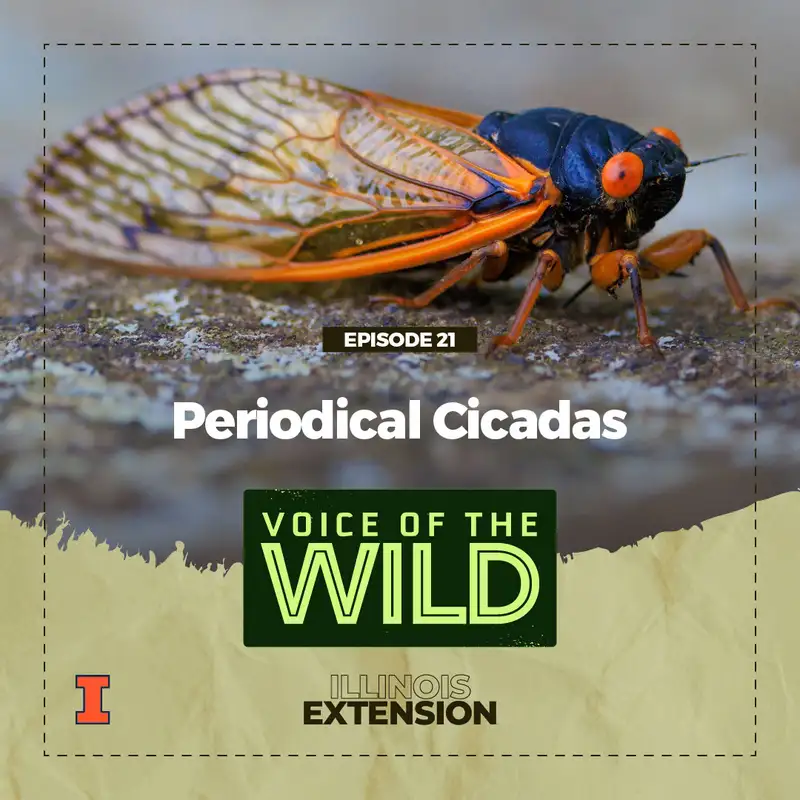 Episode 21
Episode 21
· 05:03
This is Illinois extension’s voice of the wild. For a few weeks in 2024 all seven species of periodical cicada will be calling from different areas of Illinois. The collective chorus of a cicada brood can be deafening, but like any natural chorus, it consists of individual and identifiable singers. In this episode we’ll learn the handful of songs you can hear during the 2024 double emergence.
The first step to identifying the periodical cicadas you’re hearing is to find out which brood they belong to. The two broods that have emerged this year are the great southern brood which are 13 year cicadas and the northern Illinois brood which are 17 year cicadas. The great southern brood extends from the southern united states all the way through to central Illinois. The northern Illinois brood extends from about where the southern brood ends to well beyond Chicago. If you’re in the middle of the state, take a look in the description of the podcast for a more detailed map. It’ll show you where one brood ends and the other begins. With that, lets start the episode.
The seven periodical cicada species are separated into three groups. the members of these groups are very similar and differ from each other almost exclusively by their cycle of emergence.
The cassini group has two species, magicicada cassini a 17 year cicada, and magicicada tredecassini, it’s 13 year counterpart. The cassini group is characterized by a primarily black abdomen and a buzz that rev’s up and then falls back down. To me they almost sound like an electric weed wacker. Here’s cassini the 17 year cicada singing for the northern illinois brood, followed by tredecassini, the 13 year cicada singing for the great southern brood.
[songs]
the decula group has two species, Magicicada septendecula, a 17 year, and Magicicada tredecula the 13 year. The decula group are relatively small compared to the other magicicadas, have narrow orange stripes on their abdomens and a hesitating, pulsating song. Here’s septendecula, the 17 year in the north, followed by tredecula, the 13 year in the south.
[songs]
The decim group has three species, Magicicada septendecim, the 17 year, Magicicada tredecim, and neotredecim, both 13 year species. The decim group are the largest of the magicicadas and have wide orange stripes on their abdomen. Here’s Megicicada septendecim singing the quintecential “pharaoh” song followed by tredecim singing a very similar copy
[songs]
Magicicada neotredecim is a special case. In part of its distribution, it sounds much like its 17 year counterpart septendecim, but In southern Illinois and southern Missouri where neotredecim’s distribution overlaps with tredecim, the other 13 year decim group cicada, the pitch of neotredcim’s call is raised slightly. This is likely an adaptation that prevents tredecim and neotredecim from interfering with each other’s mating. Here’s tredecim’s call followed by neotredecim modified, higher pitched call.
[songs]
You can find more information about the decim’ groups distribution and evolution by clicking the University of Connecticut link in the description. University of Connecticut was also the source for the cicada sounds used in this episode. Their website on cicadas is fantastic, as are the informational materials on cicadas created here at the U of I, links to which you can also find in the description. Voice of the Wild is a service of Illinois Extension’s Natural Resources, Environment, and Energy program. Thanks for tuning in to Voice of the Wild to learn some new insect calls.
Listen to Voice of the Wild using one of many popular podcasting apps or directories.